The past 12 months have certainly been an emotional whirlwind for those involved with Real Valladolid.
Having been promoted to LaLiga in 2021/22, a rollercoaster of a 2022/23 season ended in heart-breaking fashion, succumbing to their relegation battle and finding themselves dropping down to the Segunda Division by just a single point, ruing missed opportunities and the inability to take advantage of their dominance in the final match.
Valladolid’s relegation had a detrimental knock-on effect concerning their playing squad ahead of a crucial bounce-back season, unfortunately losing wonder kid defender Iván Fresneda to Sporting CP, having seen his release clause slashed in half as a result of their relegation.
Off the field, things were not too promising either, with majority shareholder and footballing legend Ronaldo Názario looking to relinquish footballing control and distance himself from the Spanish outfit, but not before sacking the club’s sporting director and transfer department days before the present season was set to begin.
One shining light amongst all the turmoil was head coach Paulo Pezzolano, initially hired after a successful stint with Ronaldo’s other footballing project, Cruzeiro, with the Uruguayan aiming to steer them away from relegation.
Having kept the faith that Pezzolano would right their wrongs and guide Valladolid back to LaLiga, it would begin to appear that despite public outcry regarding Ronaldo’s loyalties and questionable decision-making — this is one decision that has certainly been vindicated.
As we look to the present day, Valladolid finds themselves in exceptional form, with a run of five wins in their previous six matches, having only conceded one goal within that time frame.
With long-time leaders Leganés stumbling, Vallodolid find themselves level on points in second place, looking to emerge as champions and achieve a second successive promotion from the Segunda.
This Paulo Pezzolano tactical analysis will begin to highlight some of Real Valladolid tactics which have allowed Pezzolano’s side to tick as we arrive at the business end of the season.
With four matches remaining, our analysis will address why Valladolid has been so versatile in the attacking phase whilst being resolute when out of possession.
Paulo Pezzolano Tactical setup and general style
Throughout this season, Pezzolano has looked to experiment with their tactical structure but has appeared to have settled on a tried and trusted setup, as highlighted by their recent period of successive victories.
Valladolid’s 4-3-3 has been incredibly impactful in their previous matches, providing excellent balance for the type of football that Pezzolano is looking to produce.
The extra presence in the centre of midfield positively contributes to their positional play, with Valladolid aiming to be ball-dominant and control the game, waiting for opponents to tire before unlocking the defence with intricate play.
Valladolid have averaged a 3rd highest possession percentage of 55.6% this season, allowing them to utilise their line-breaking players with incredible progressive statistics; ranking second and third for progressive carries (769) and progressive passes (1598) respectively.
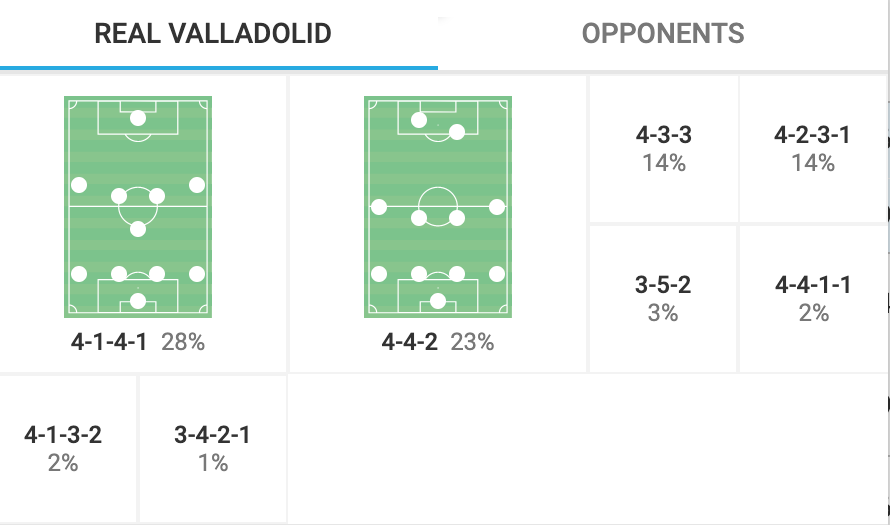
The basis of their build-up play relies on their two central defenders splitting wider and being comfortable in their ability to swing the ball across the pitch to find the perfect opening.
With a goalkeeper long ball percentage of 42% and Valladolid opting for the long pass 11.06% of the time this season, it is clear that Pezzolano prefers a more risk-averse option in their mission of progressing the ball into the final third.
Their lone pivot often drops deeper to support the initial build-up play but also offers a defensive addition should the ball be lost quickly in transition.
But the theme with many footballing sides that commit bodies forward to have superiority in the final third is that they are often stung on the counter, and Valladolid are no different.
Valladolid have benefitted from being one of the strongest sides in the division, comfortable in the knowledge that they can produce their desired football with little trouble in the majority of matches.
However, against Eibar, Valladolid were incredibly naïve in their defensive positioning and decision-making, with the central defenders too stretched to effectively cut out the Eibar ball once possession was given away cheaply.
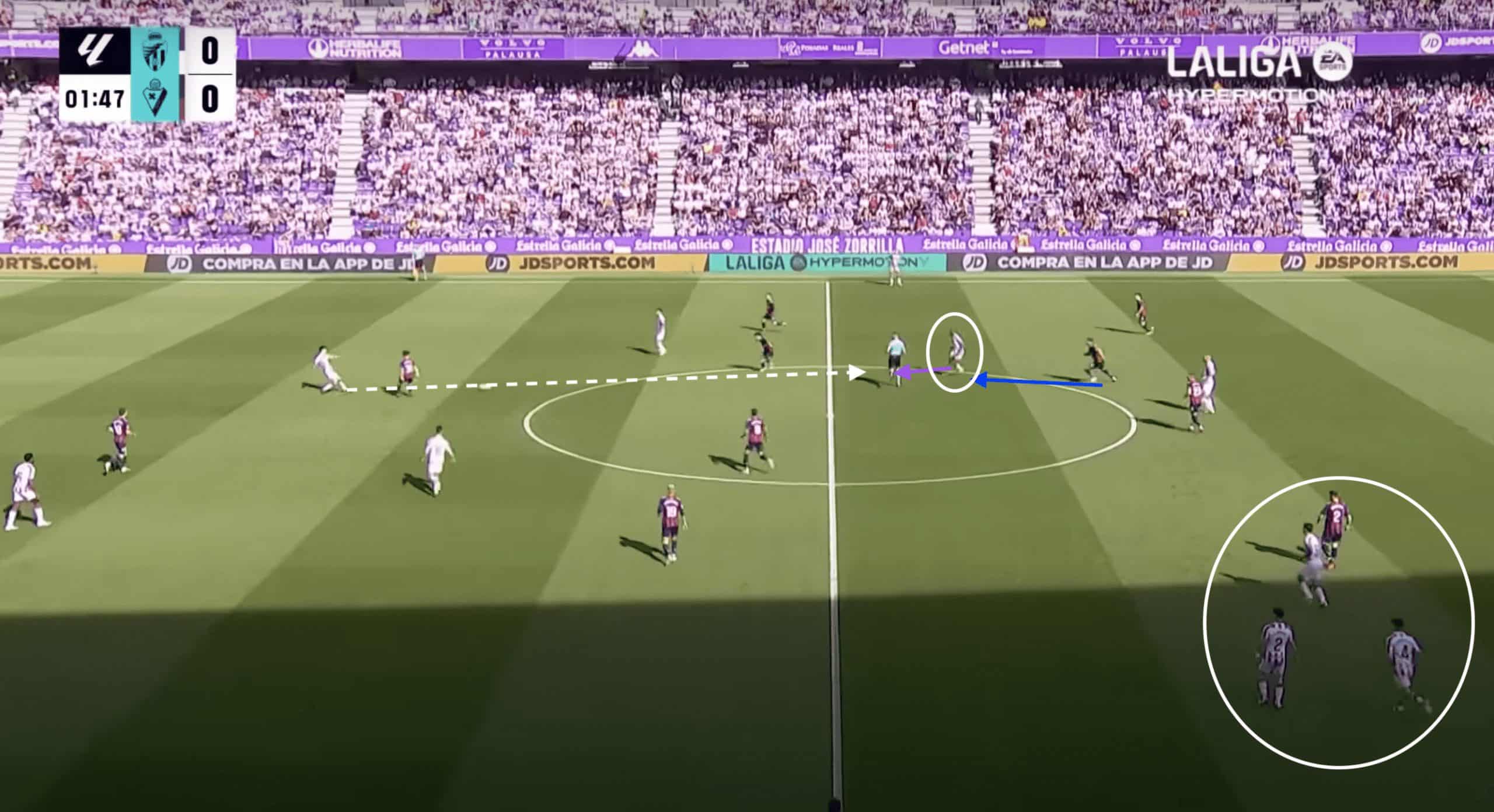
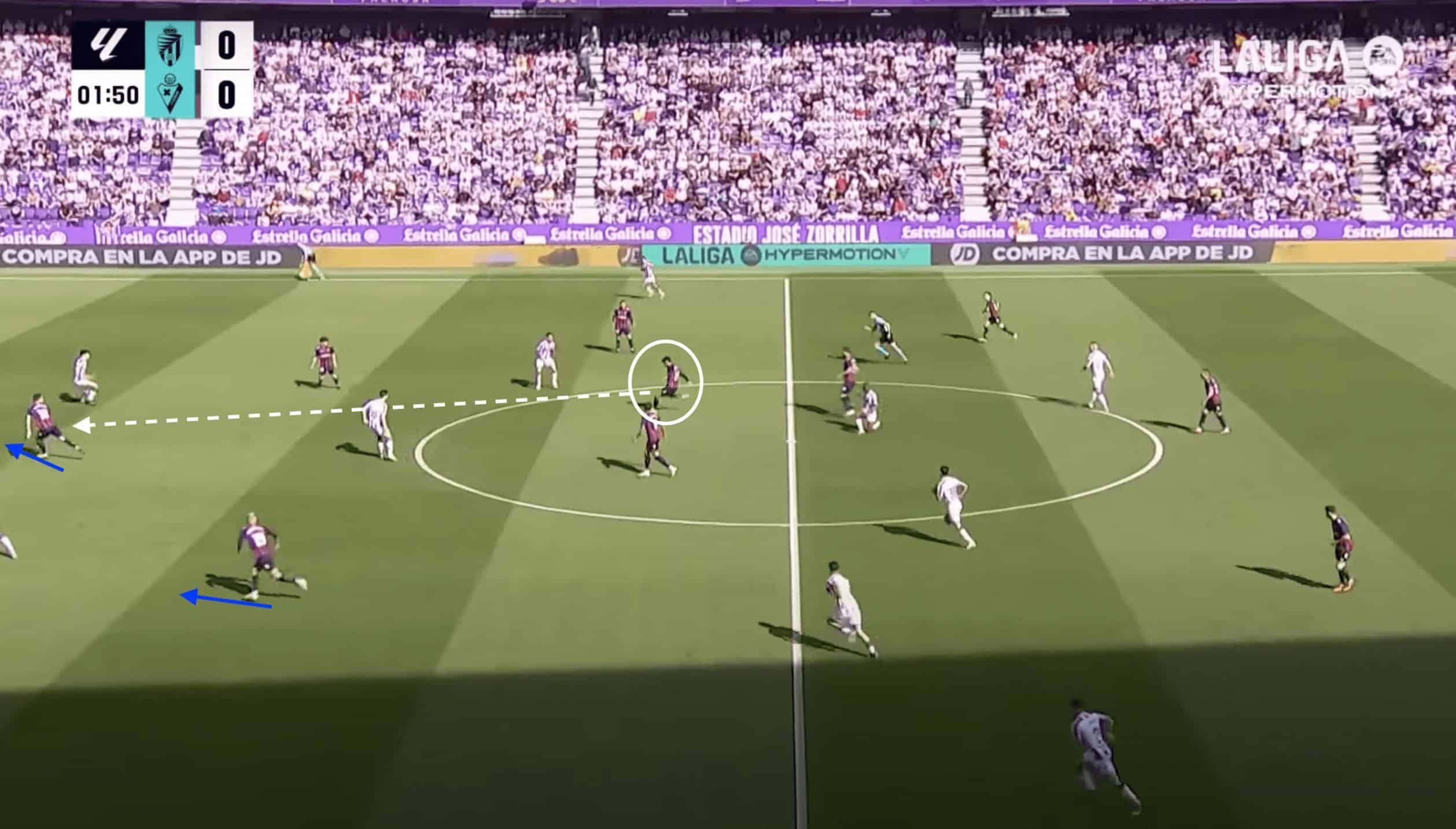
The positioning of their full-backs matches that of Pezzolano’s Cruzeiro side before he made the switch over to Spain, with a clear indication as to how he wants his team to work the ball into the box.
The likes of Luis Pérez and Sergio Escudero find themselves bombing up the pitch and looking to stretch the defensive line by maintaining width in the final third, interchanging with Valladolid’s wingers and offering a key passing outlet with both underlapping and overlapping runs.
This then provides little to no surprise that Valladolid ranks first and third in the Segunda Division for both cutbacks per 90 (0.97) and crosses per 90 (22.21), respectively, aiming to create space in the central areas by widening the field as much as possible.
One of the full-backs can also look to sit further inside to form more of a three-man central defensive structure, equally crucial for both quicker progression and rest defence should one of the central midfielders on that side already choose to create an overload out wide.
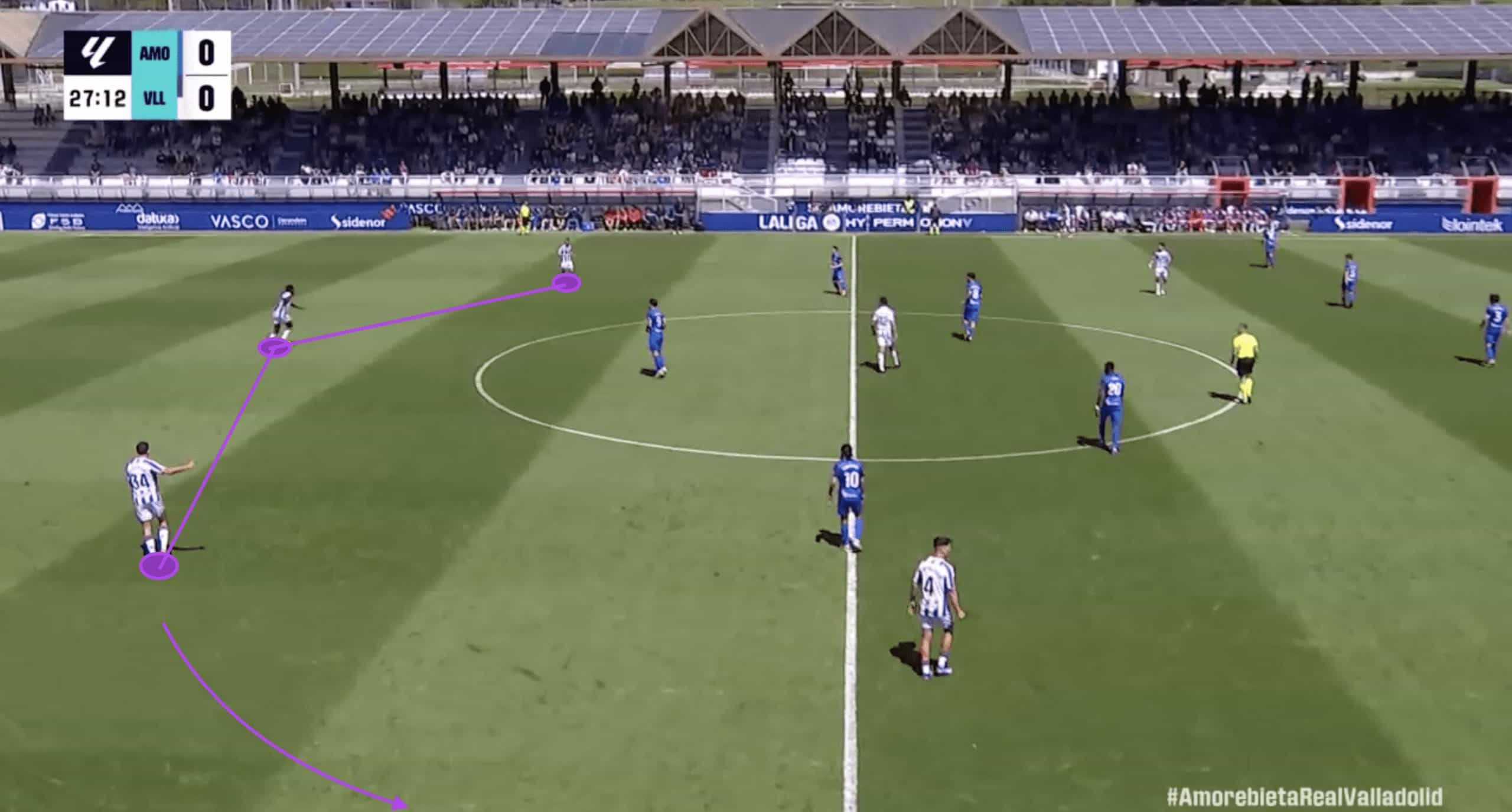
Whilst this method of attack can often benefit from their increased numerical presence and overload of the wings, Valladolid remains inventive when trying to work the ball into the box from wider areas.
Luis Pérez, in particular, has enjoyed an outstanding creative season, ranking second out of all Segunda players for both one-twos initiated (29) and successful crosses with 45.
In the example below, we see how well the Spaniard is able to disrupt the positioning of the opposition midfielders in order to create space to attack the backline.
After Pérez receives the ball in the middle third, we can see him perform a perfectly-timed 1-2 with Oliveira, darting into the space vacated by the CD Mirandes defender who had been drawn wide by the movement of Raul Moro.
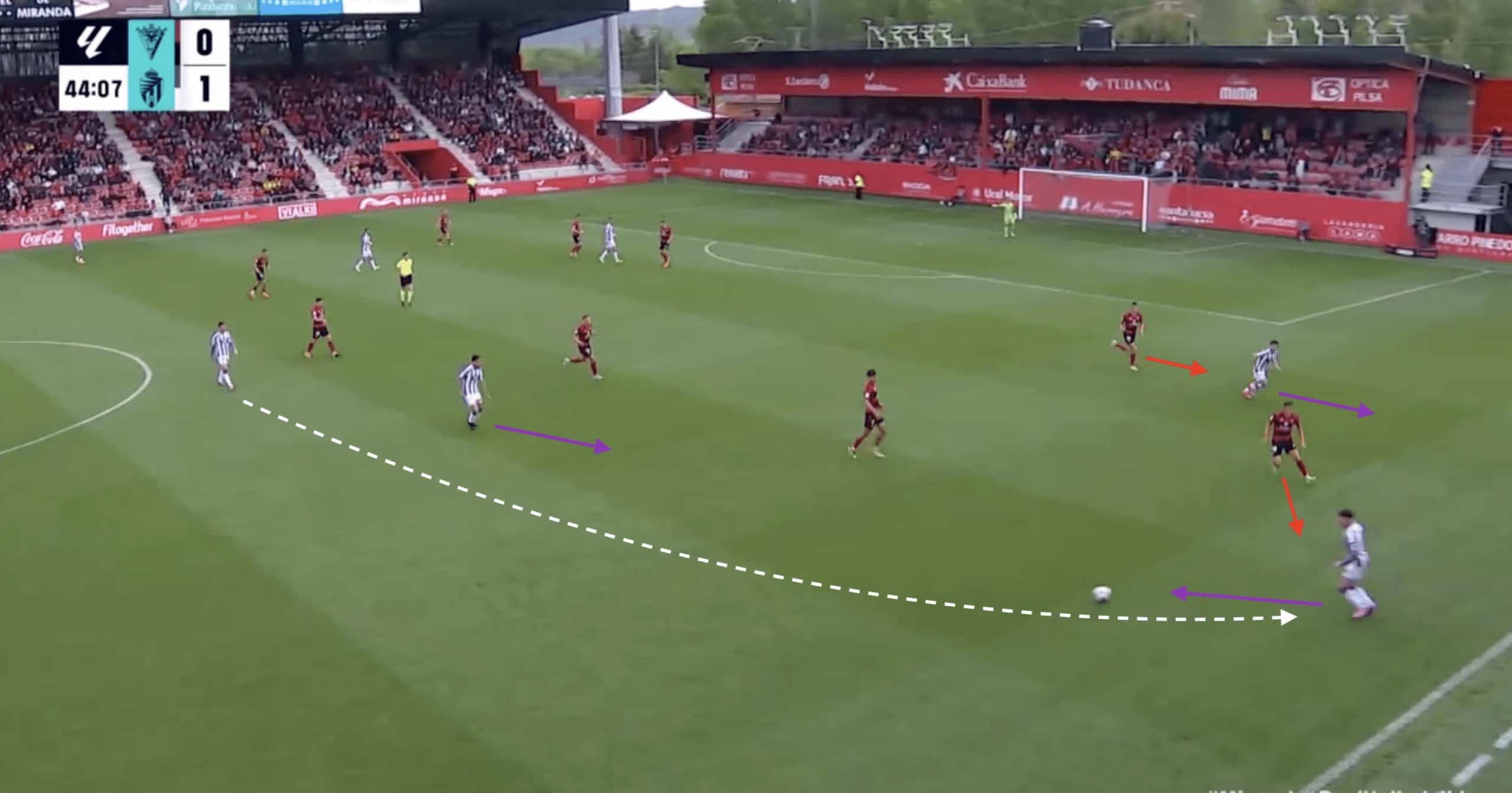
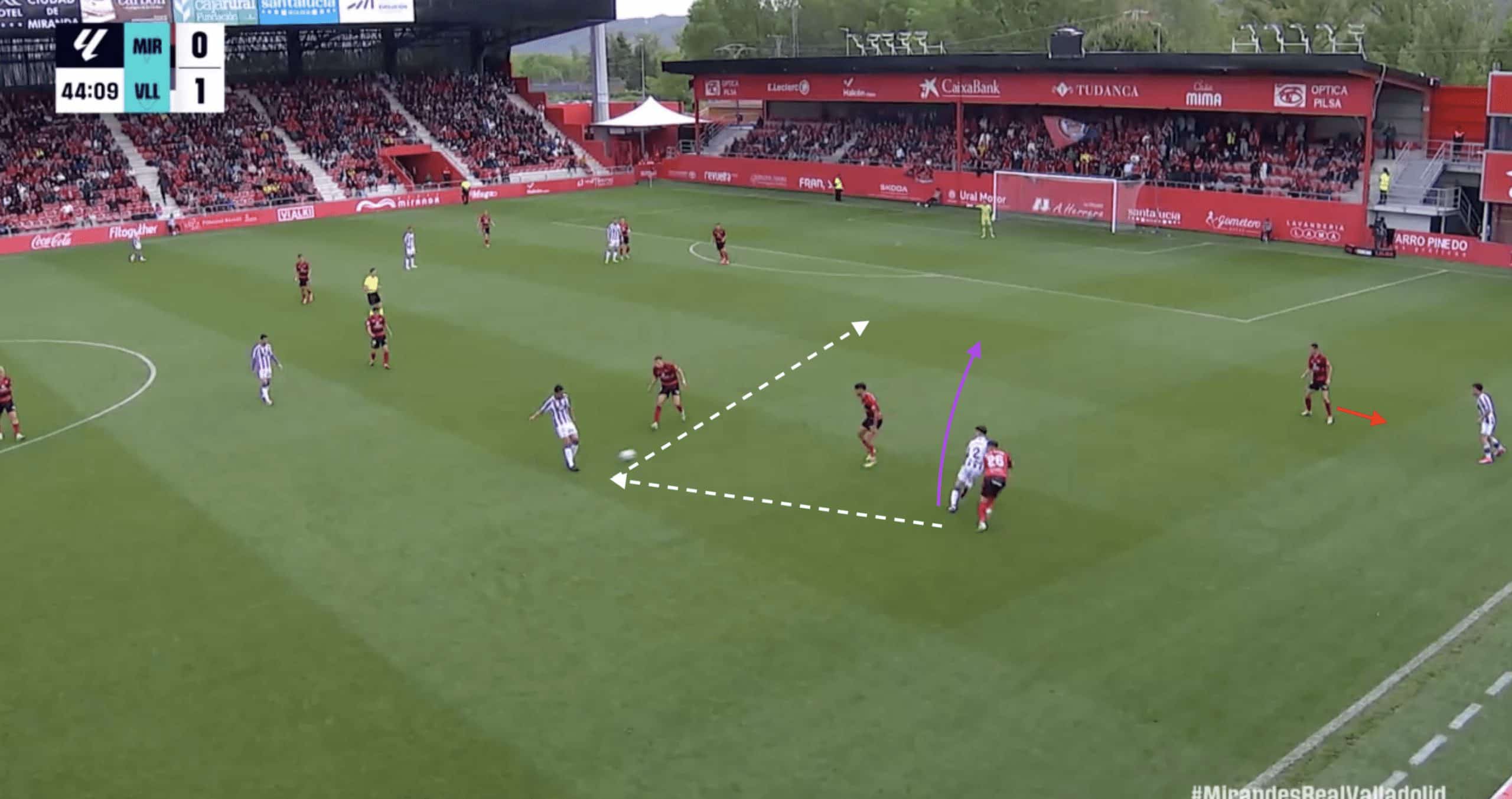
It is also the Spaniards’ off-the-ball movement that results in his side being successful in the final third.
In the opposite fixture earlier in the season, Pérez was able to reverse his underlapping run and retreat to create a passing outlet towards the top of the penalty area.
To react to this, the CD Mirandes personnel had to momentarily release some pressure placed on Iván Sánchez, who was doubled up on out wide, allowing the substitute space to skip around the outside and deliver a perfectly weighted cross for Mamadou Sylla to score.
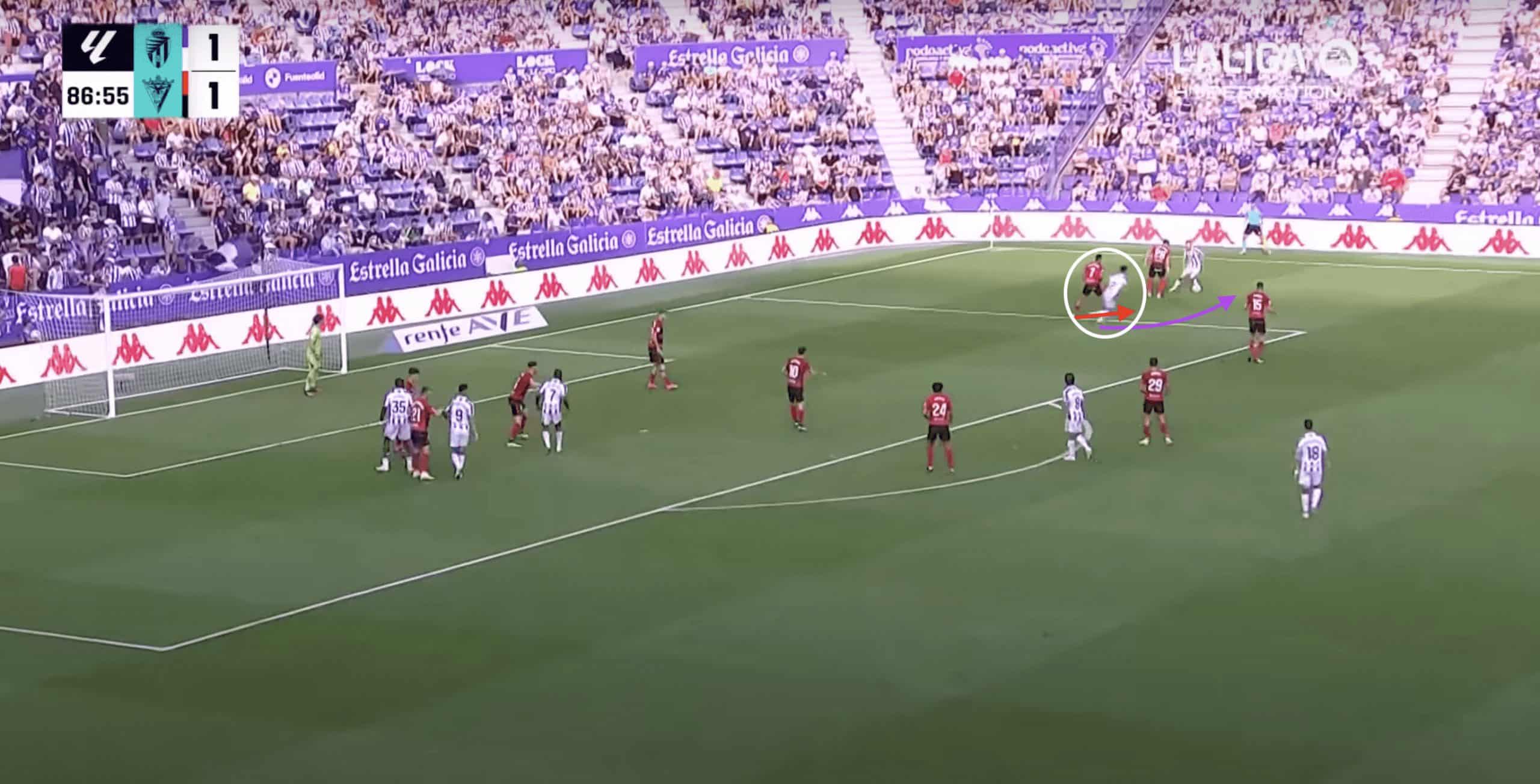
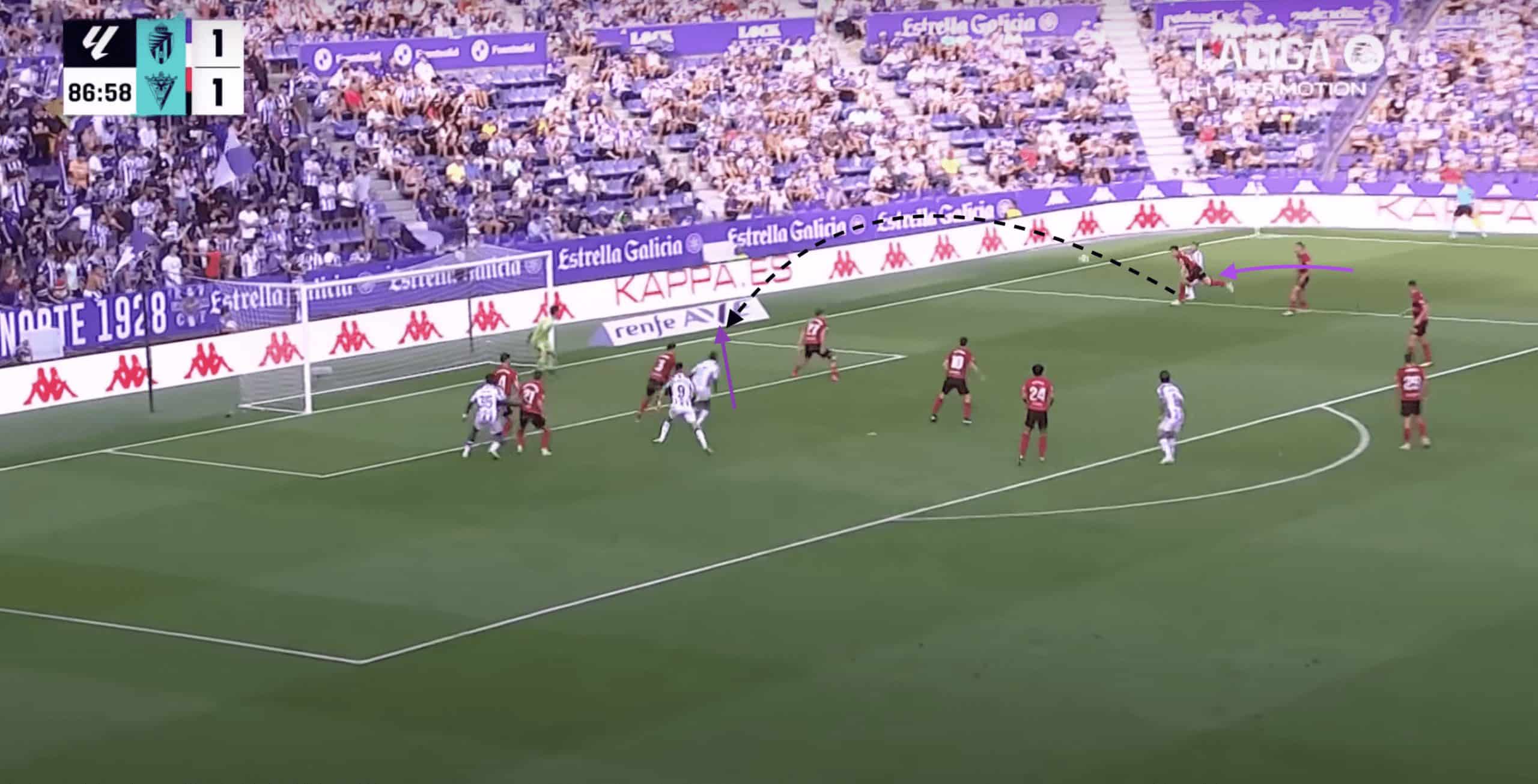
Monchu’s midfield mastery
Even though the departure of Ivan Fresneda was certainly devastating, Valladolid have bounced back nicely this season; only conceding a sixth-lowest 0.94 non-penalty xG per 90 this campaign.
Therefore, one of the most intelligent off-season moves was the Spanish side keeping hold of their 24-year-old midfield general Monchu.
The Spaniard is integral to his side’s offensive progression in all thirds of the pitch, seen shuttling back from his advanced midfield position to create a passing triangle with his team’s left central defender and left back.
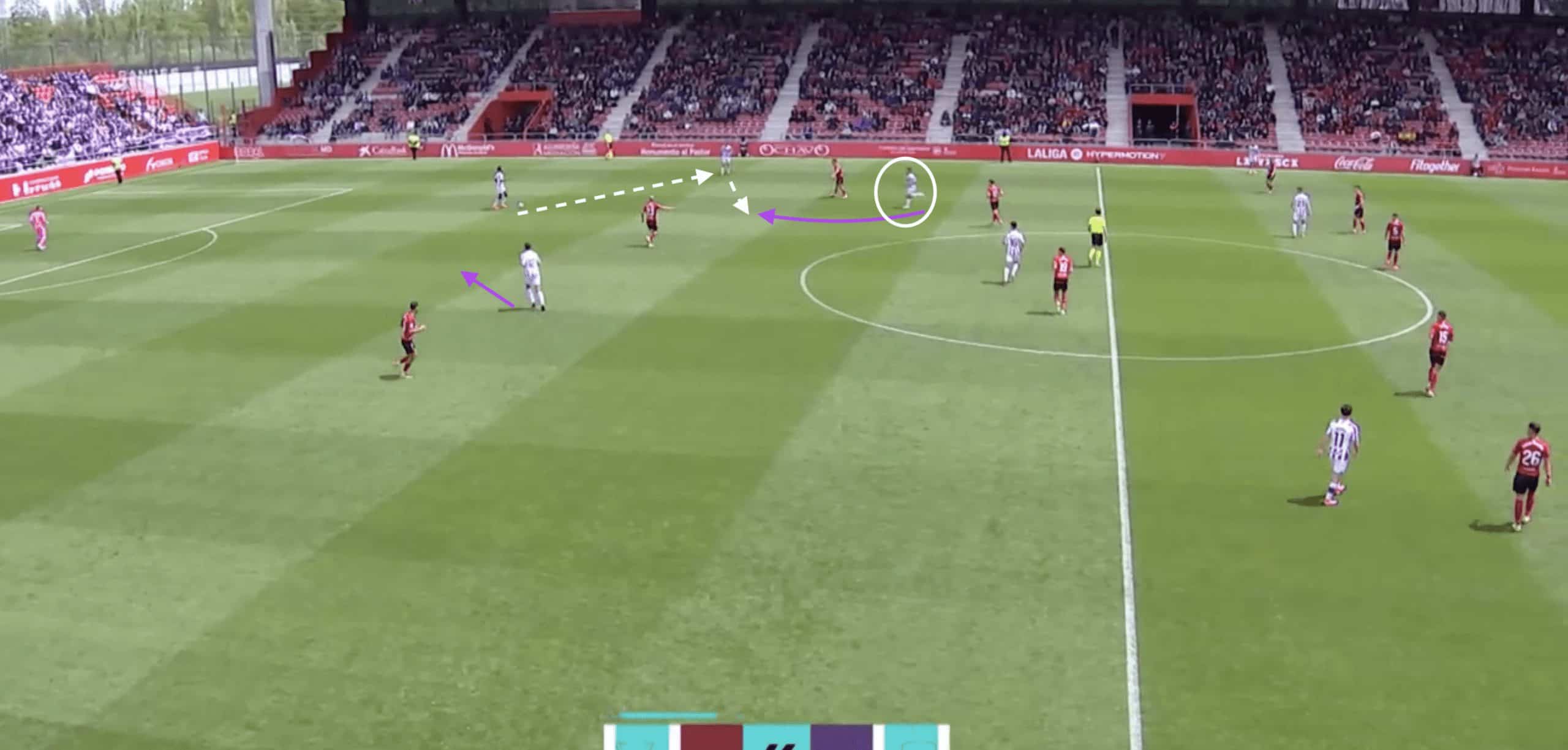
It is from this deeper-lying playmaker role that Monchu can be so influential.
He drops into the defensive line with the entire pitch in full view, allowing him to dictate and orchestrate play from the offset.
He drives a perfectly weighted long pass towards the right flank against Sporting Gijon, with Amath Ndiaye taking it in stride and breaking into the opposing penalty area.
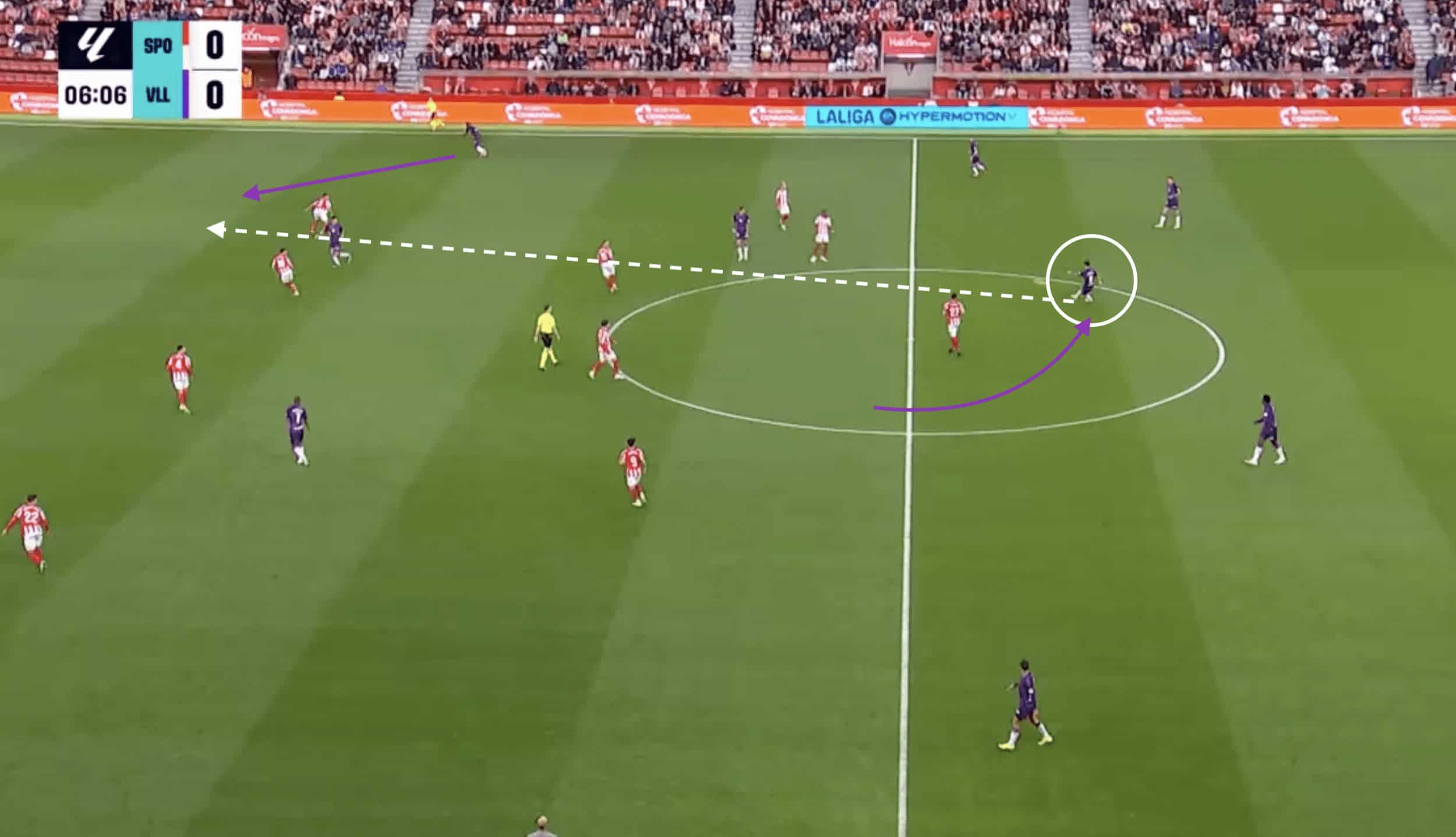
Not only does Monchu make strides when looking to initiate an attacking move, but he also possesses the ability to finish them with excellent finishing and attacking intelligence.
Despite usually being deployed as one of Valladolid’s number eights, Monchu ranks fifth in the Segunda Division for shots taken with 118, an impressive feat when compared to some of the league’s top forwards.
His mobility allows him to be a serious threat within the penalty area, with 2.19 penalty area touches per 90, crashing the box and manipulating space.
The same can be said for Monchu’s midfield partner Victor Meseguer, who was able to fill the space vacated by the movement of Kenedy and finish off a lovely flowing move from Valladolid.
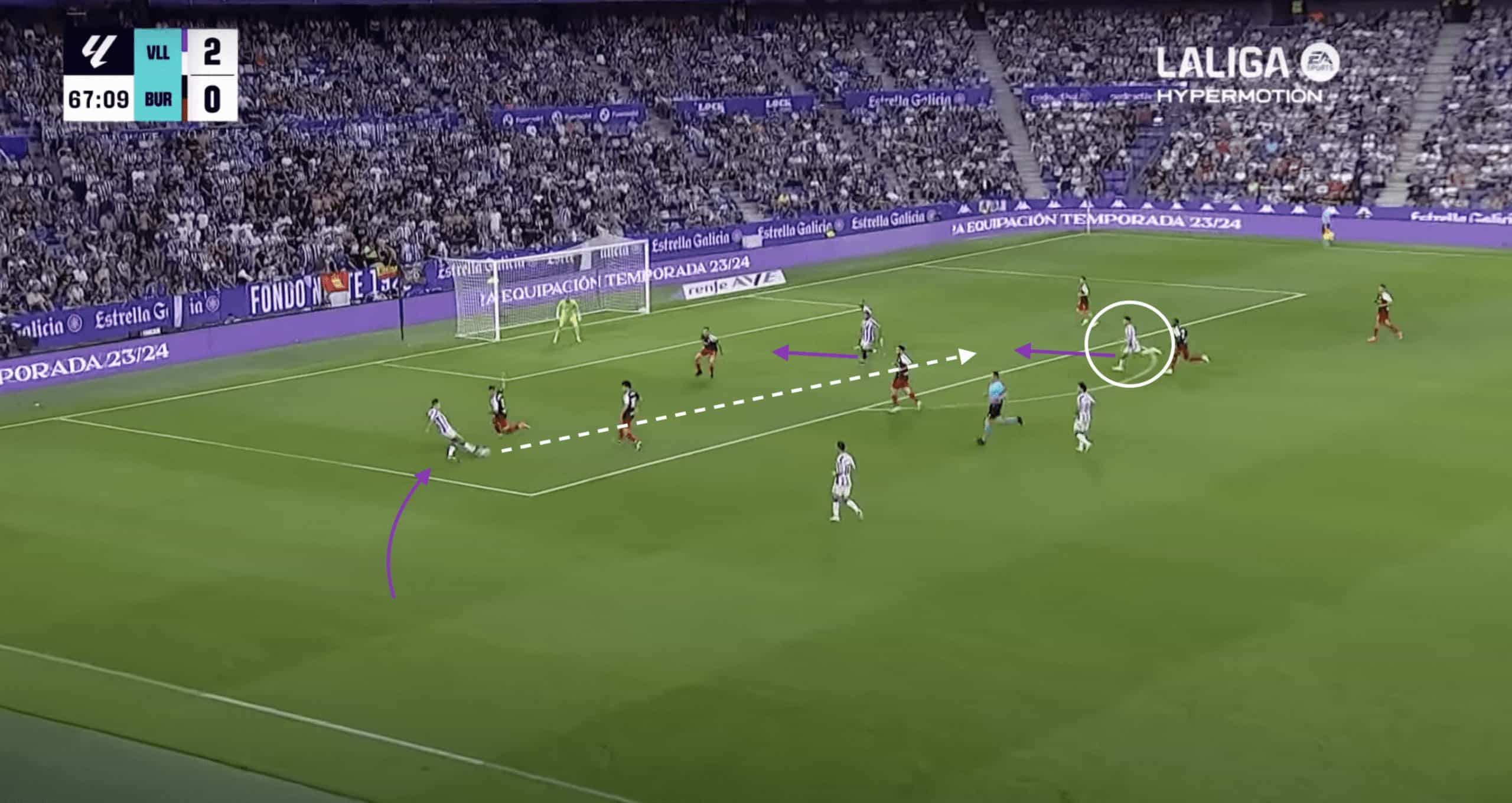
Real Valladolid Defensive solidity
While it has been one of Valladolid’s strengths for the majority of the season, their concession of only a single goal in the last six matches would suggest that their defensive efforts have really kicked into gear as we approach the curtain call for the 23/24 season.
When looking at some of the statistical data for the campaign, Valladolid have achieved an impressive 10.61 PPDA and 4.37% BDP (build-up play disruption); signifying Pezzolano’s desires for his players to maintain a proactive pressing effort as high up the pitch as possible.
An incredibly high press can certainly be a high-risk, high-reward option, which can leave coaches fearing in the defensive third when a traditional defensive structure is pulled out of place when looking to mark man for man.
However, Valladolid have also given up the least amount of touches in their penalty area across the entire division; only allowing opponents to touch the ball 580 times in 38 matches.
Even though defensive structures usually benefit from a double pivot providing more defensive support, Pezzolano has highlighted how vital rotations between his midfielders can look to nullify opposing attackers in the most dangerous scenarios.
In their encounter with Zaragoza, we see Valladolid’s back line extremely narrow and compact, which allows the opposition to work the ball towards the left wing and go around their block.
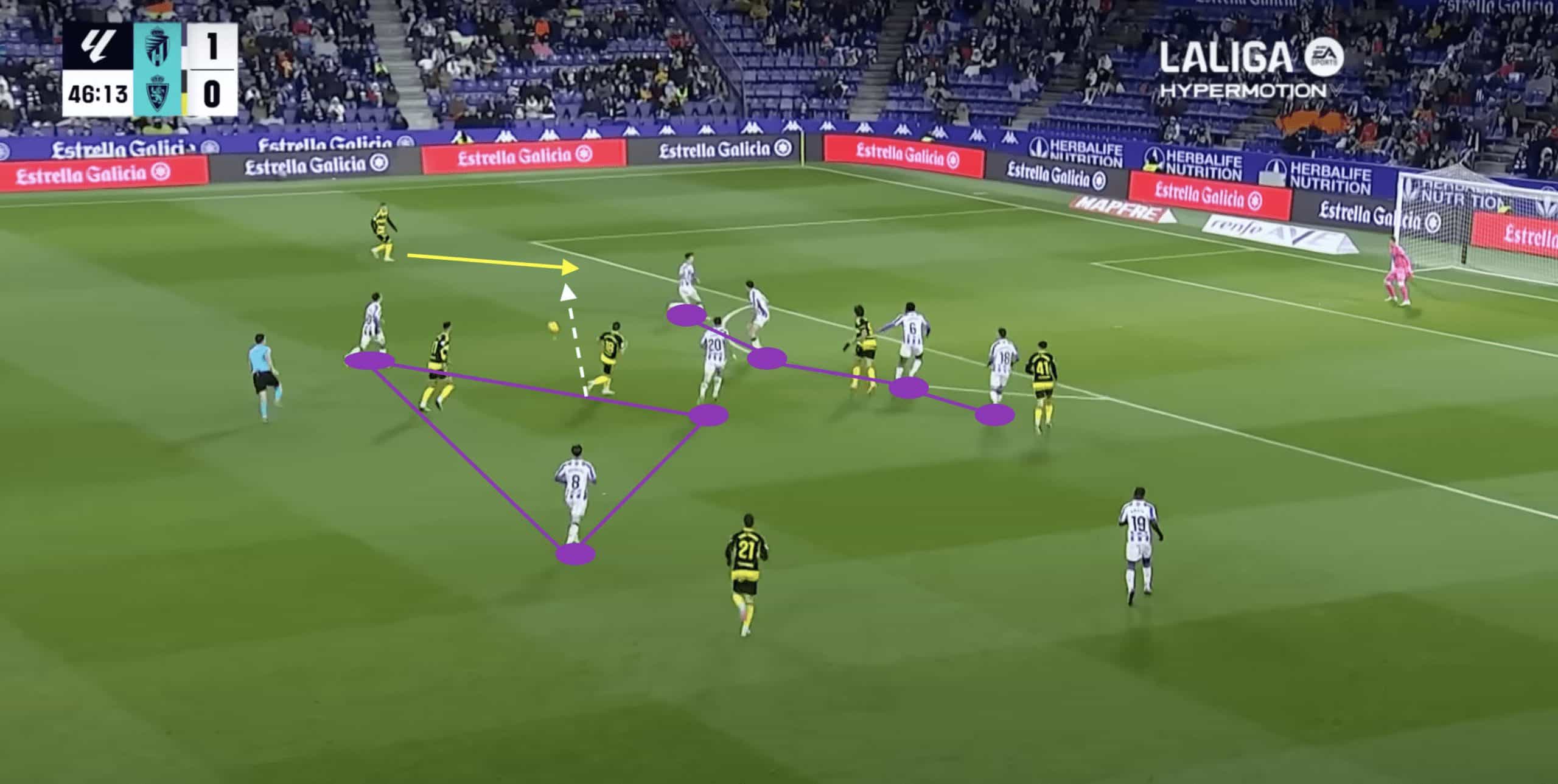
However, the movement of the single-pivot Stanko Juric immediately aims to retreat into the back line and form a 5-man defensive barrier, additionally negating a huge area that the winger may have driven into.
This then allows Iván Sanchez to double up with Pérez whilst also taking a beneficial angle which would look to deter the attacker from sliding the ball back inside, a position which Monchu can then look to cut out by drifting across to mark the threat on the edge of the penalty area.
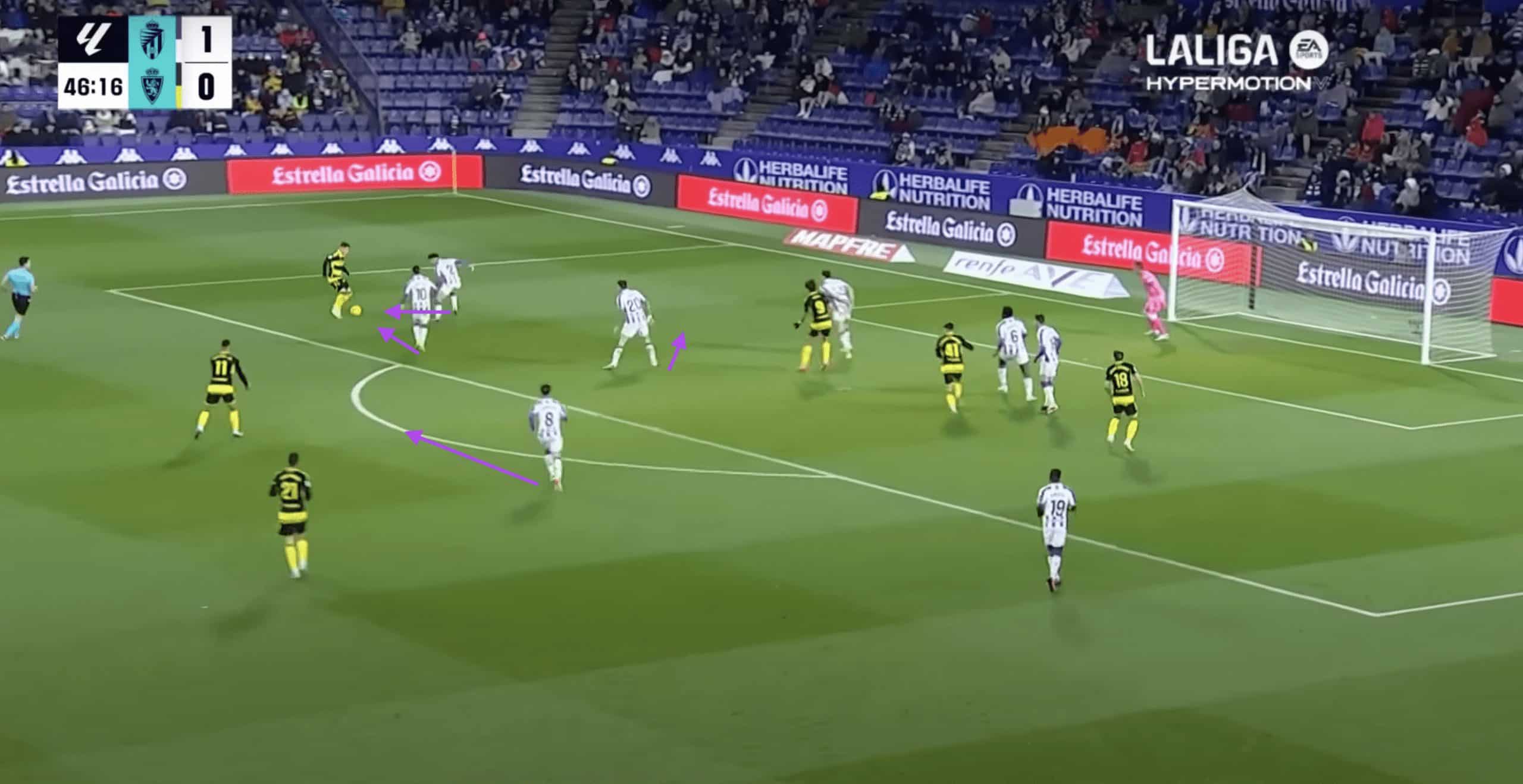
Valladolid’s defensive unit is built upon a holistic view, relying on all members of the team to exert defensive effort, especially when initially pressing is bypassed and they can look to quickly regroup.
In their match against Real Oviedo, we can see natural right winger Amath Ndiaye dropping into the defensive line as an RWB to create a 5-3-2, allowing Valladolid’s central defenders to focus upon the opposition striker with play being funnelled through the middle of the pitch.
With the extra defensive support coming from the forward line, this allows Valladolid to maintain their high-octane midfield trio, who can effectively suffocate the ball carrier and spark a counter of their own with an easy regain.
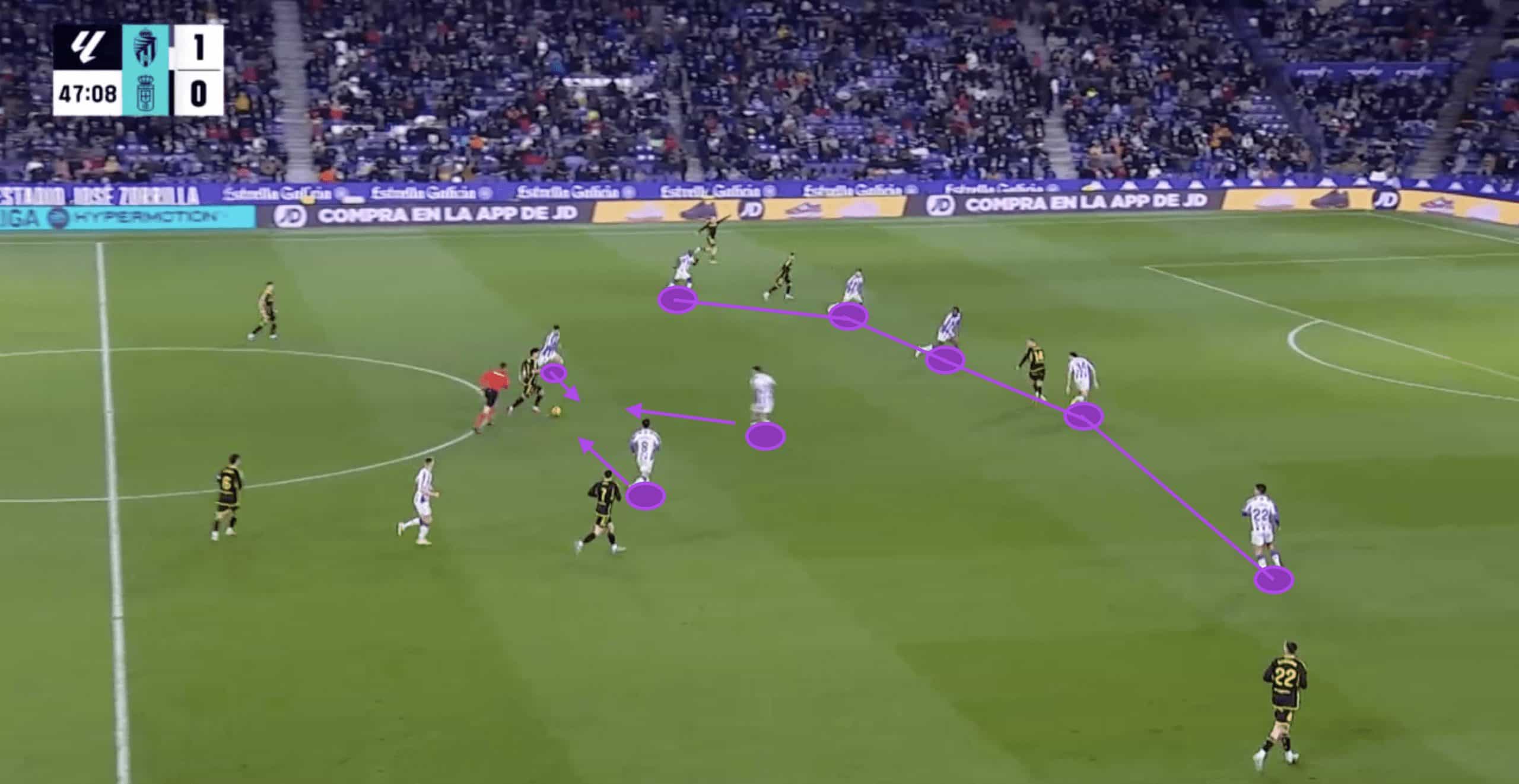
Conclusion
With promotion back to La Liga on the horizon, Real Valladolid will relish the opportunity of being back in the top flight and looking to cement that position for good.
Having displayed promising signs of a fight and near survival in such a short tenure, Paulo Pezzolano will certainly be excited about another opportunity to battle with some of the world’s elite managers and avoid the unwanted label of being Spain’s next ‘yo-yo club’.





Comments